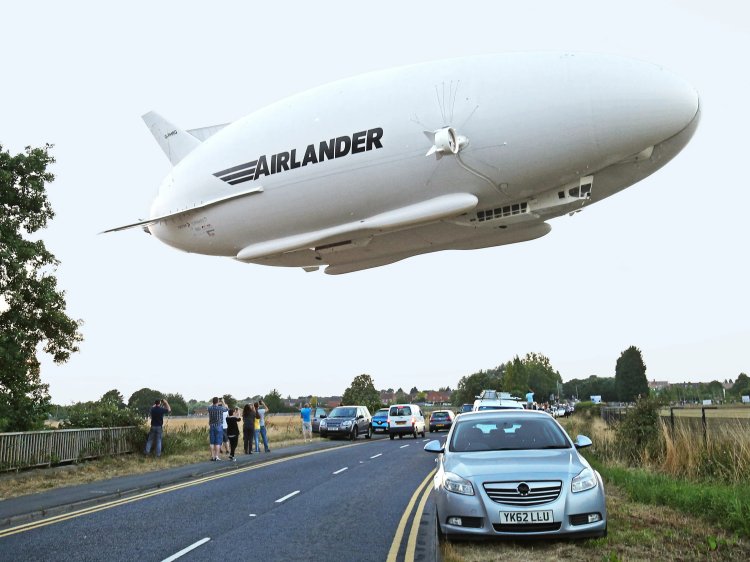Eco-Friendly Airship Ventures

Britain's innovative Airlander 10 airship could soon take to the skies to offer leisure passengers panoramic views and far less pollution than traditional aircraft, according to its manufacturer.
On the outskirts of the town of Bedford, north of London, UK company Hybrid Air Vehicles (HAV) says its plans are well underway for greener but slower commercial air travel.
The Airlander -- which is 91 meters long -- is lifted by its gigantic helium-filled hull, which is then steered through the air by engine propellers powered by conventional fuel.
The airship, initially developed for the US army, is longer than the Airbus A380 jumbo jet pumps out up to 75 percent less emissions than aircraft, according to HAV.
The group plans to start production later this year, while electric- and hydrogen-powered versions are planned in order to further slash emissions.
HAV has already manufactured a prototype, part of which is now on display in Bedford after completing test flights.
The tech hub also features a life-size model of the future airship that allows visitors to step on board and view its "luxury" configuration including a bar, passenger cabins and an observation lounge.
HAV is one of the few companies that is seeking to relaunch the airship, but using the inert gas helium.
Almost 90 years ago, the Hindenburg Zeppelin -- filled with highly flammable hydrogen -- exploded in the United States in 1937, killing 36 people and ending the widespread use of airships.
Airlander, which is capable of taking off and landing on land or water, can stay airborne for up to five days and travel more than 7,000 kilometers at about 140 kilometers per hour.
Yet its British manufacturer estimates that its first commercial airship flights will not be until 2028.
HAV currently has 23 pre-orders for the airship, with an order book totalling more than $1.3 billion.















